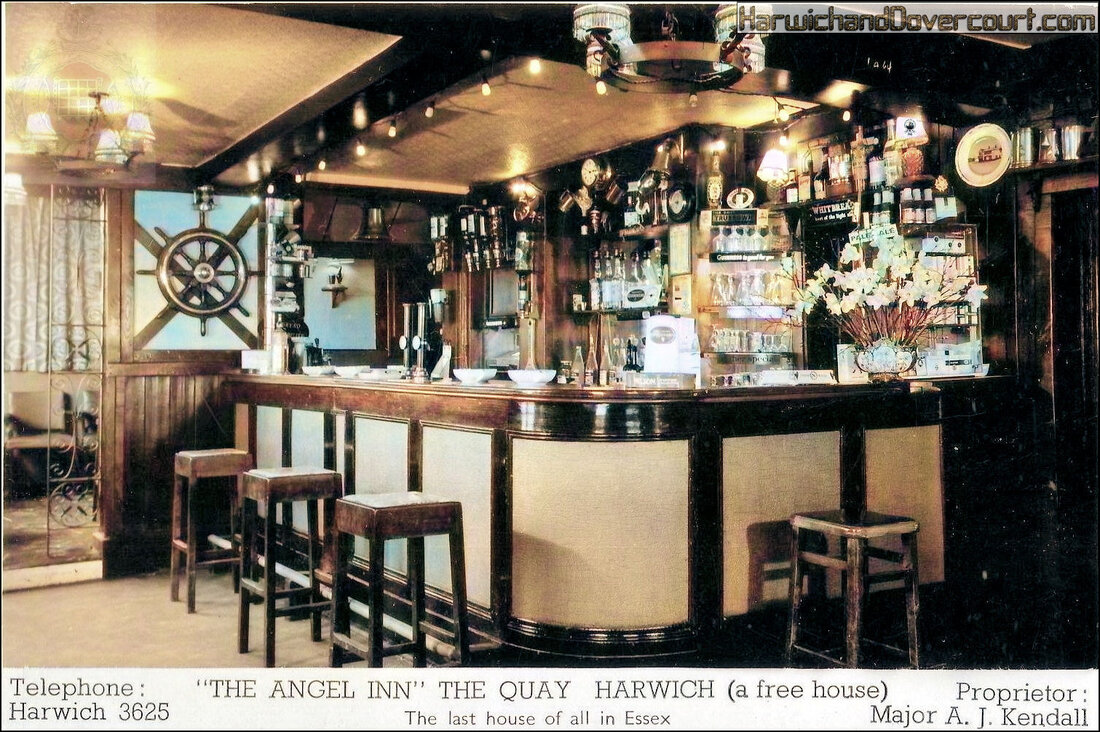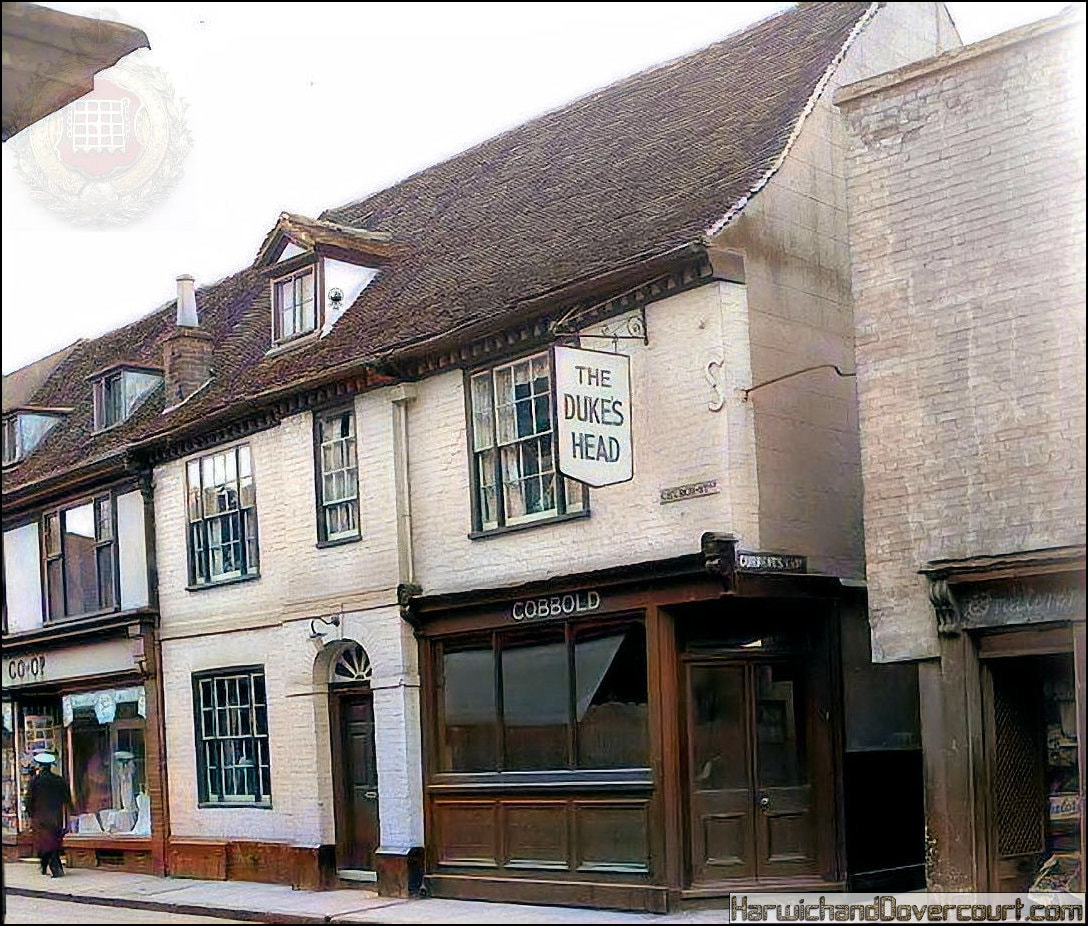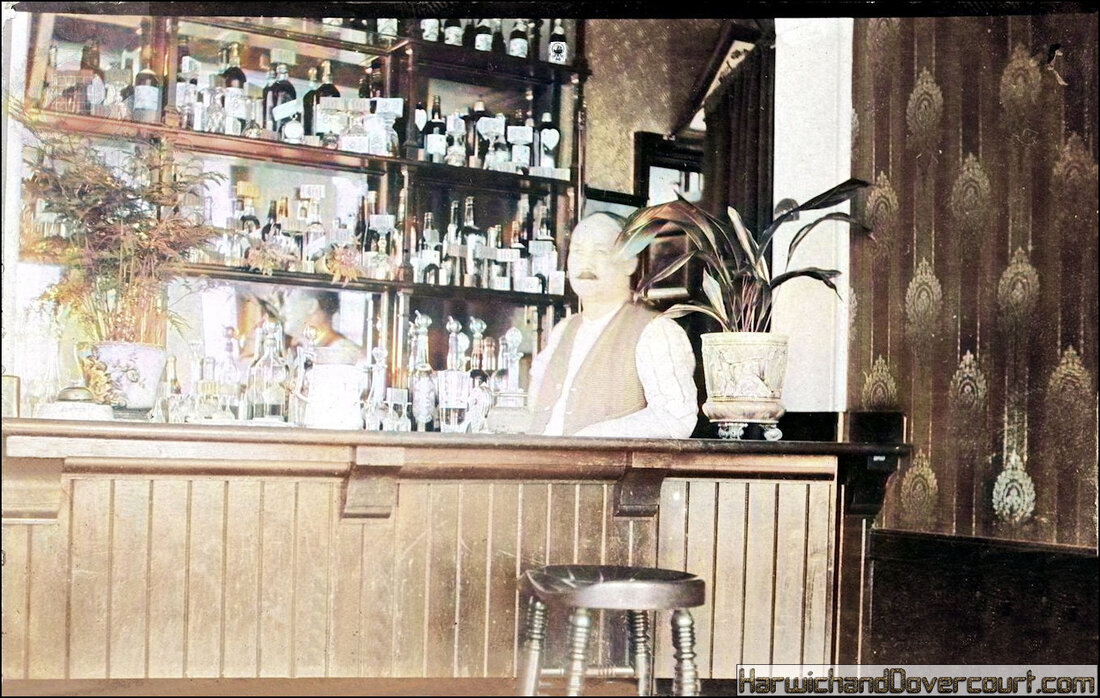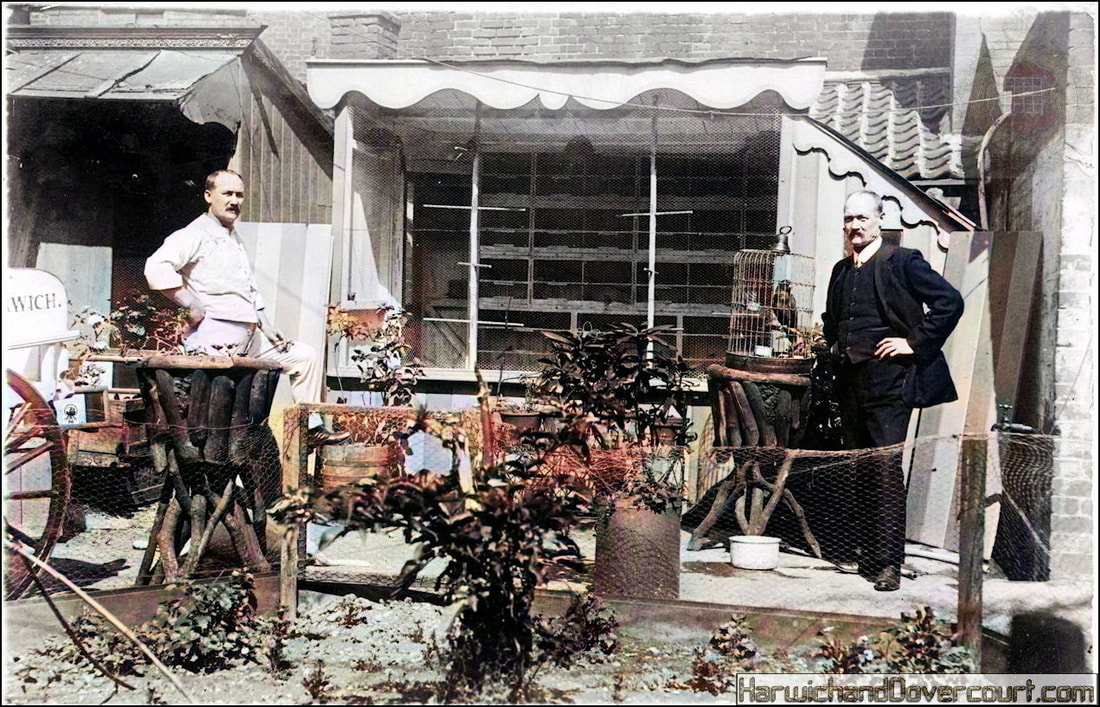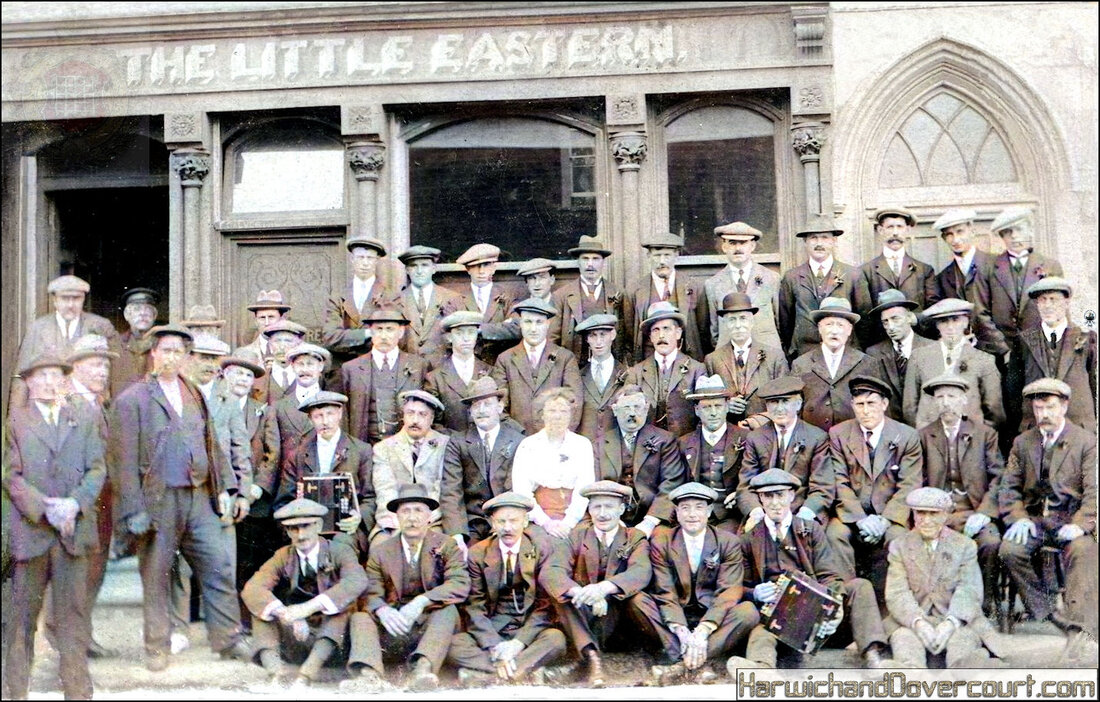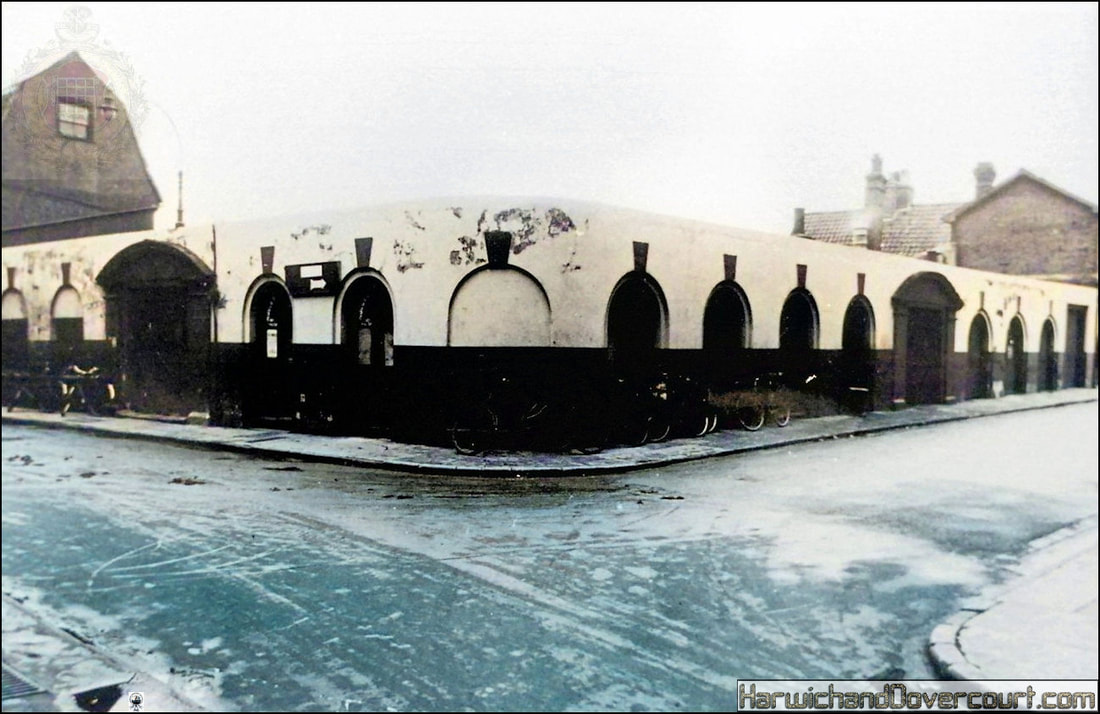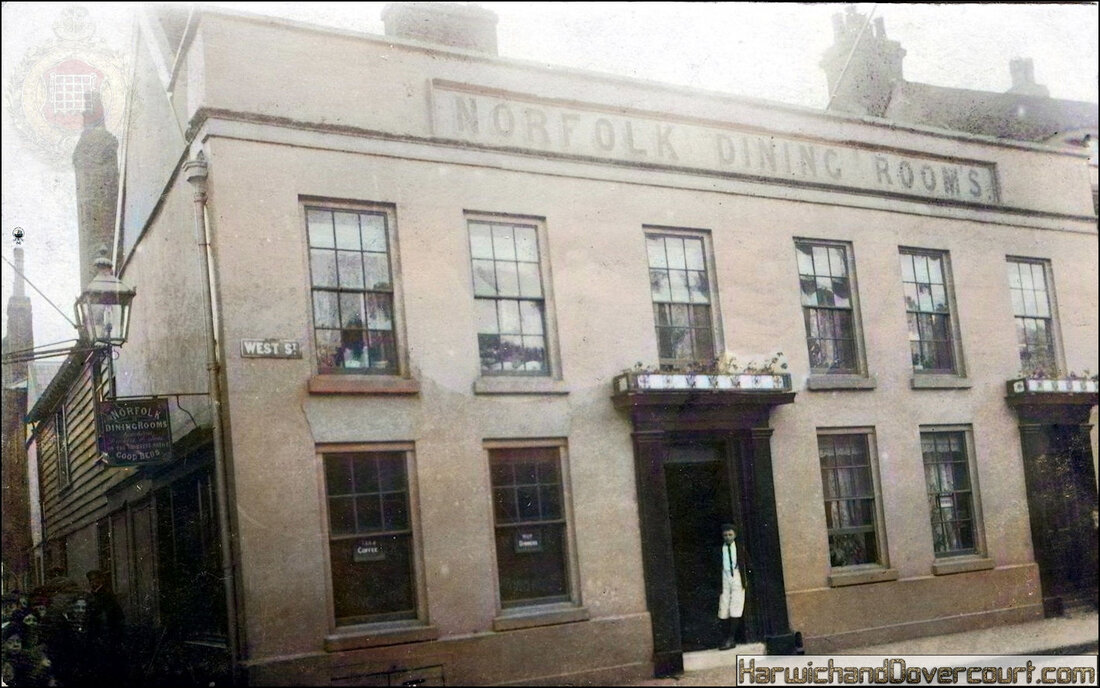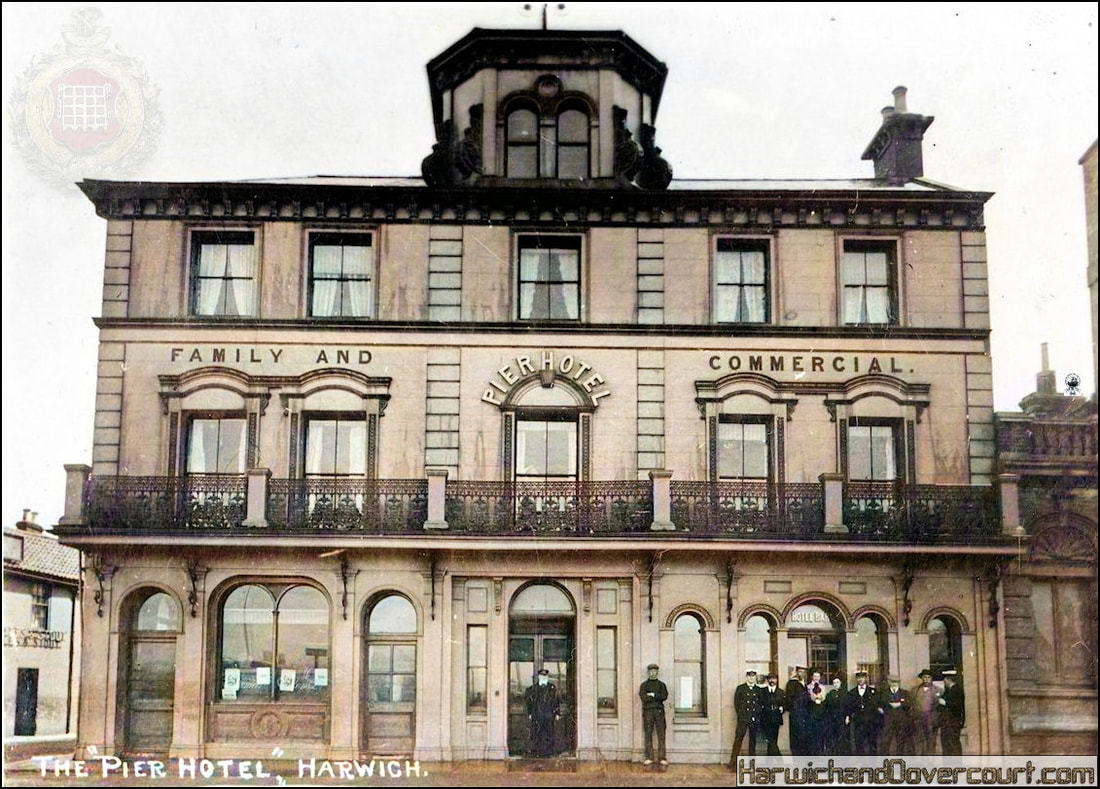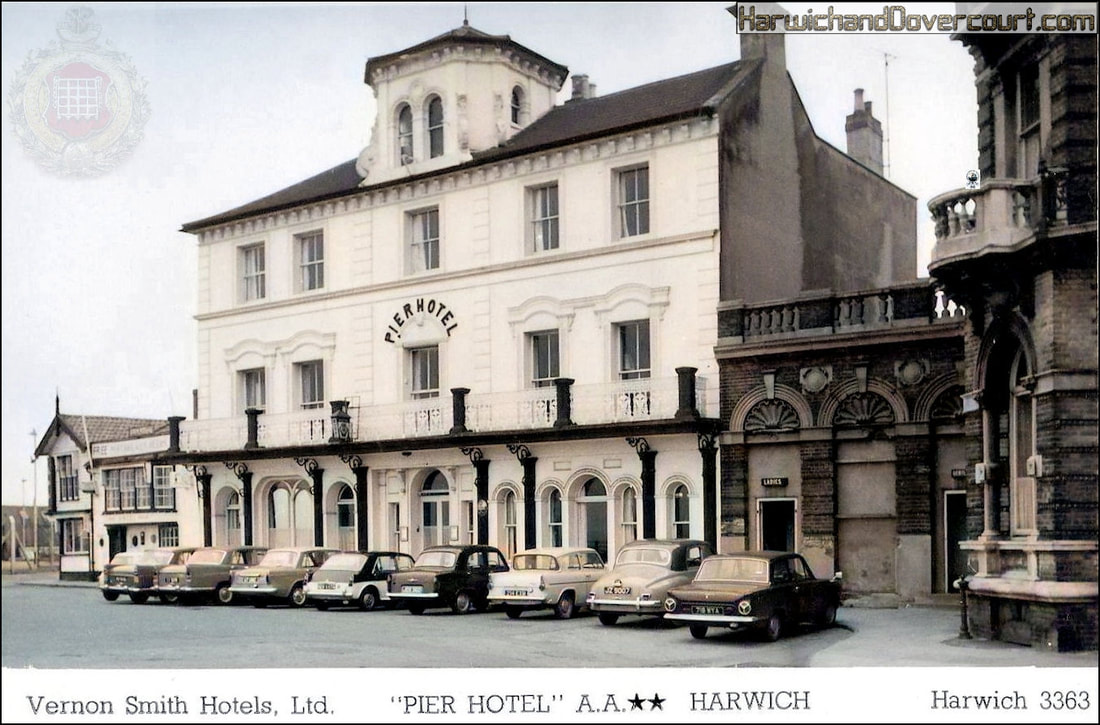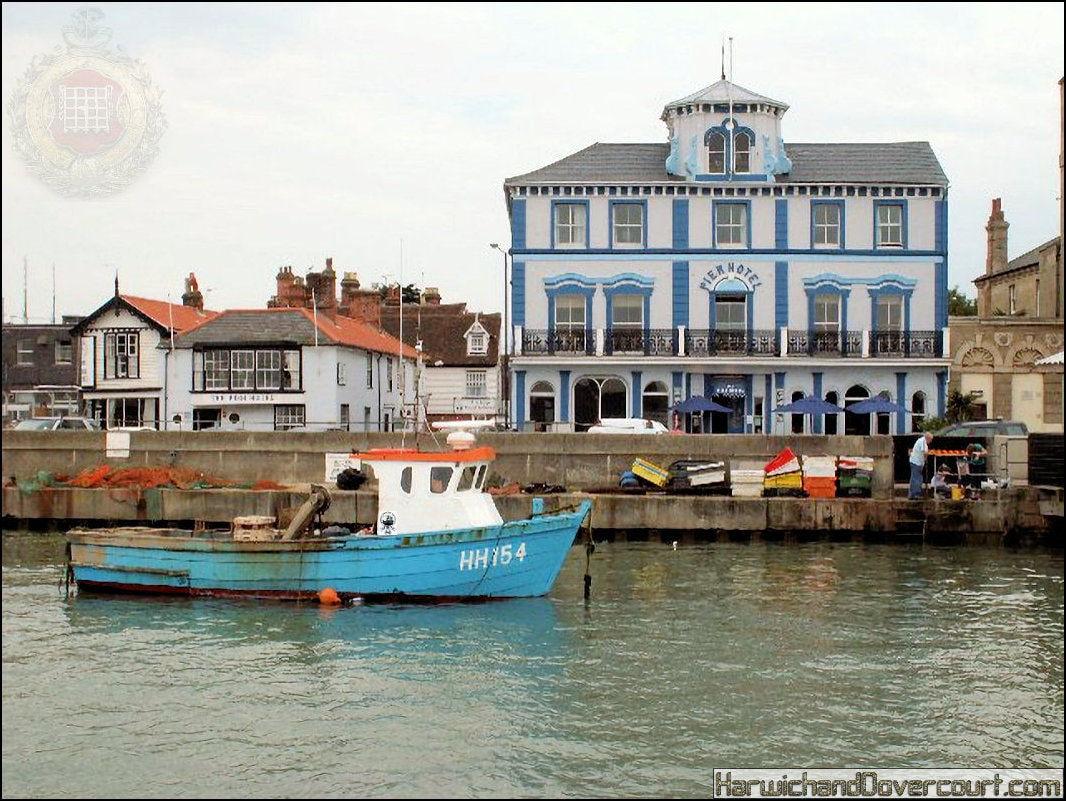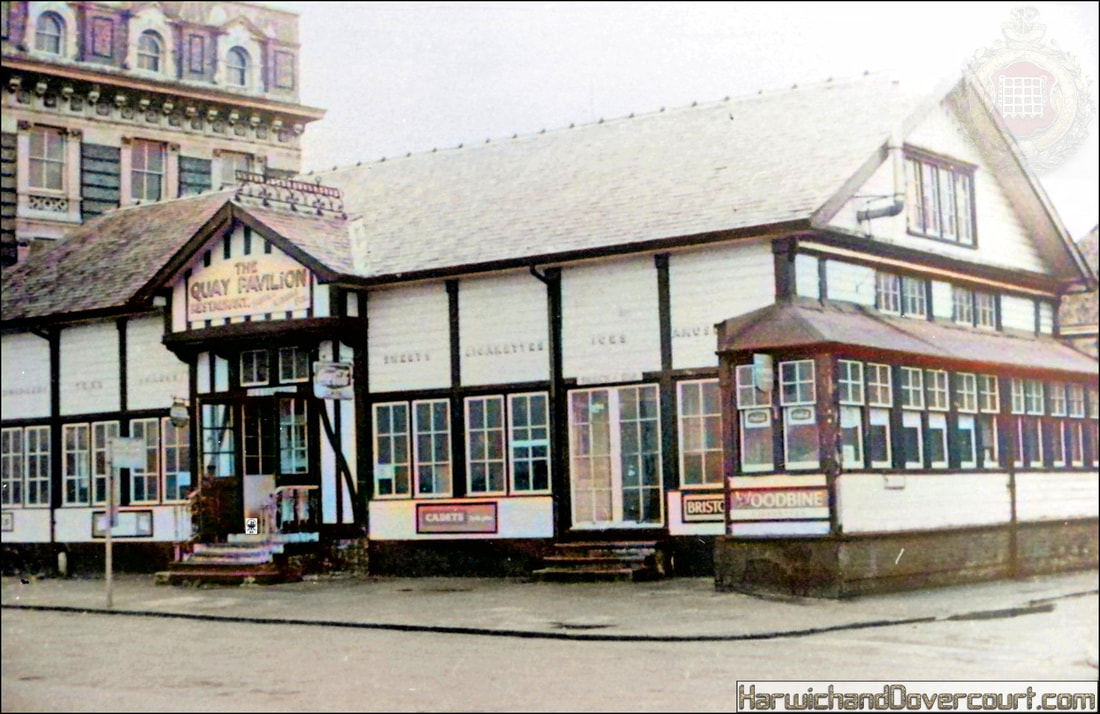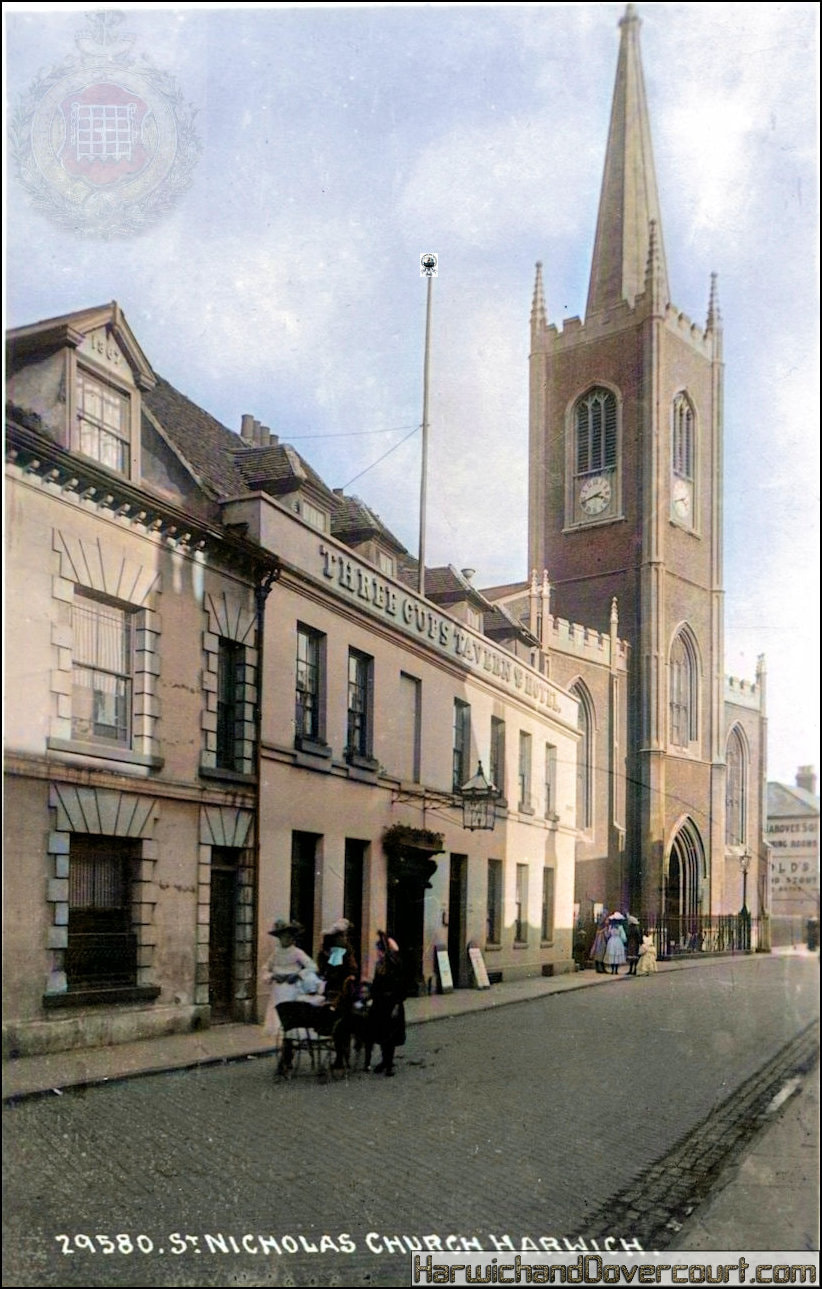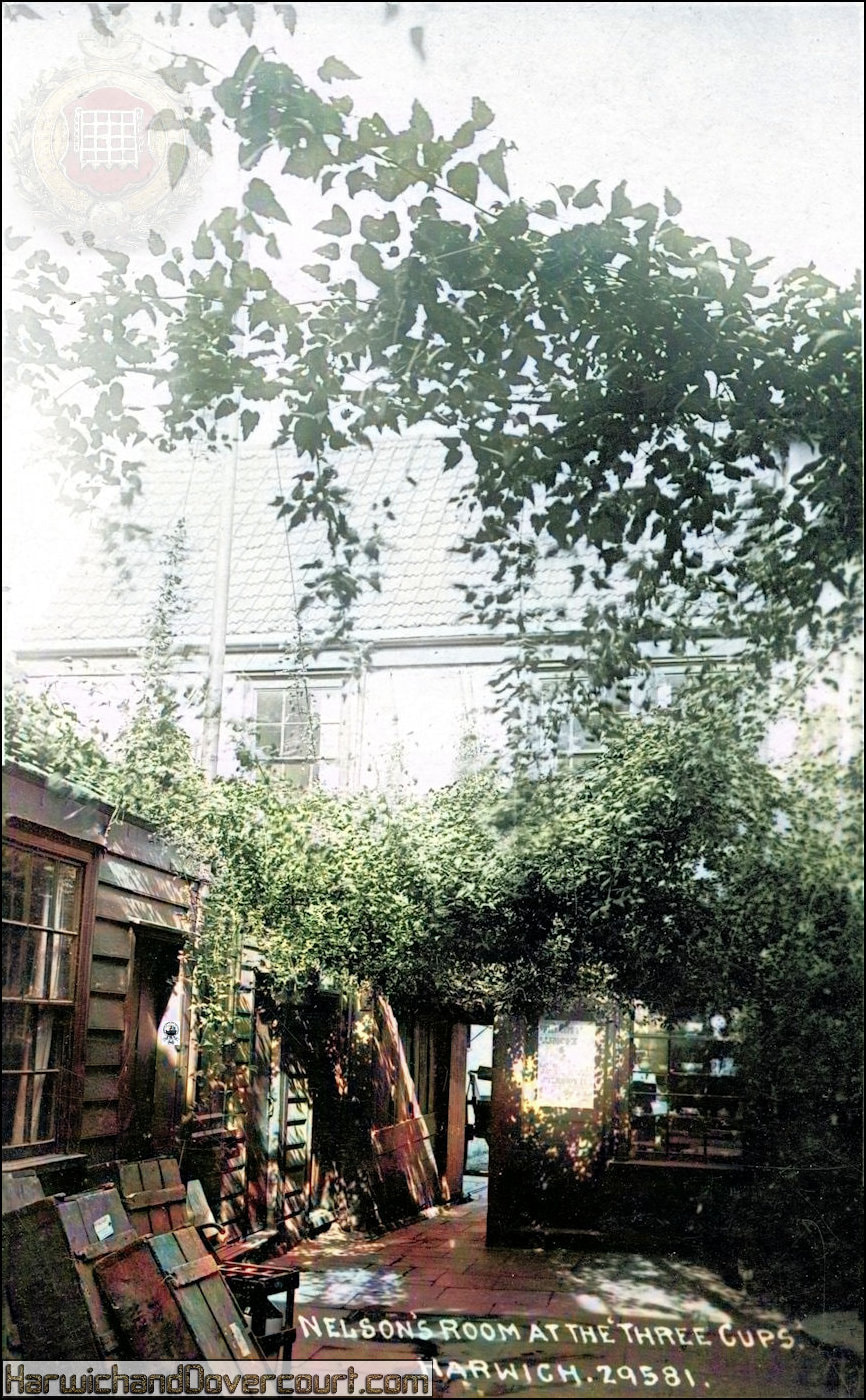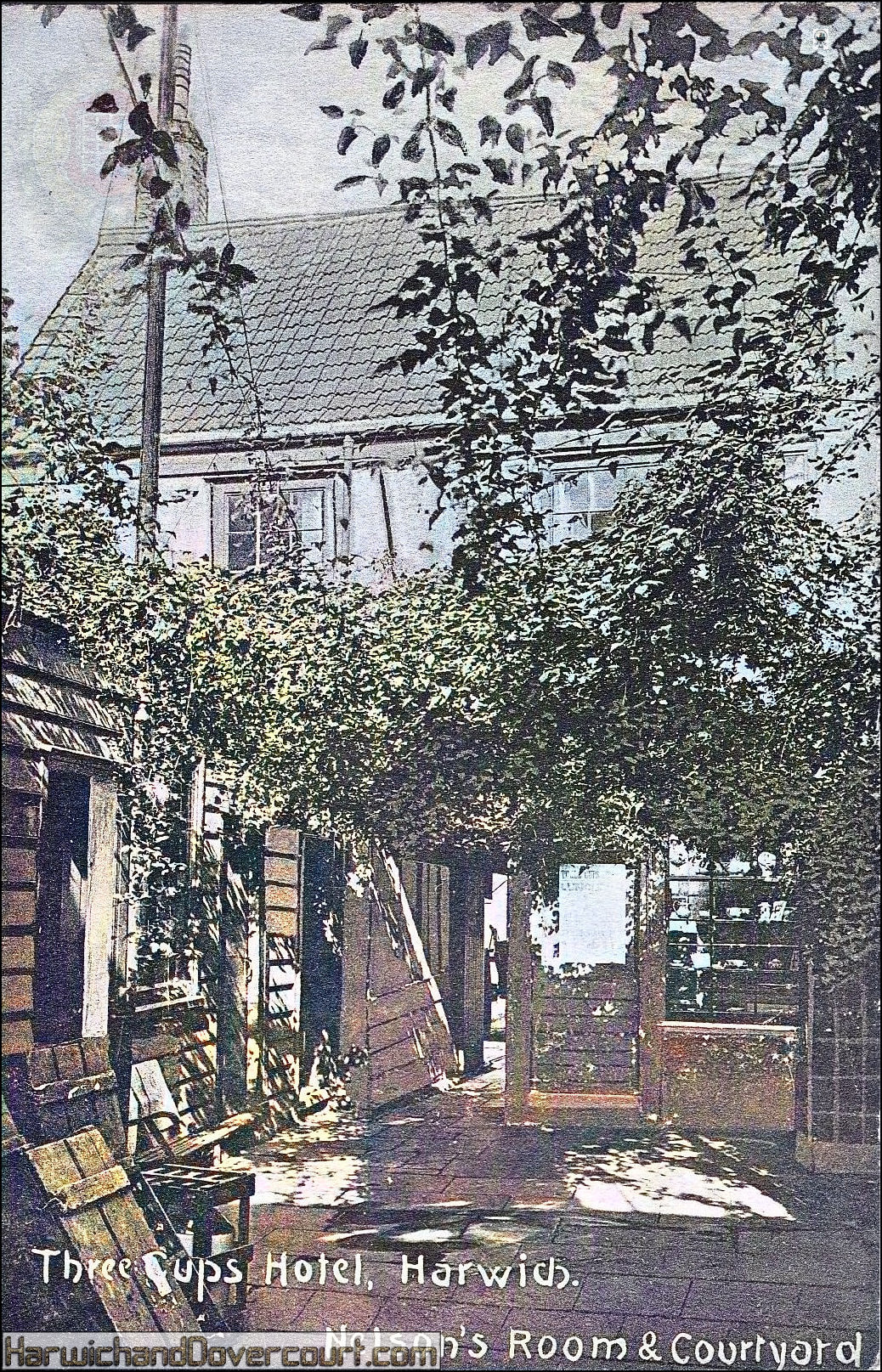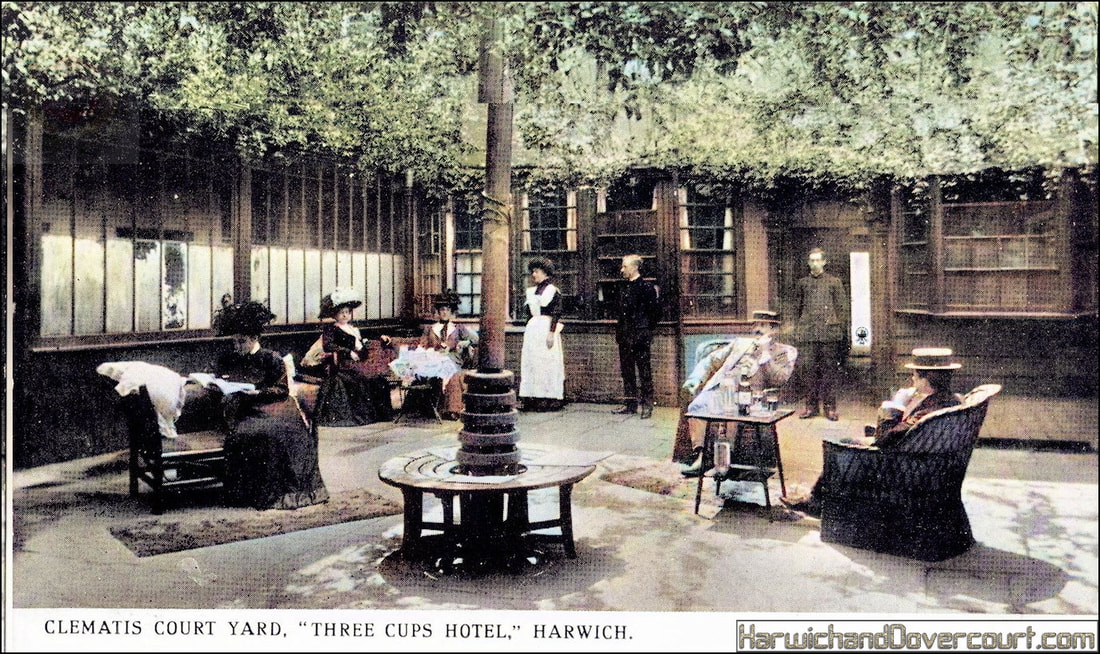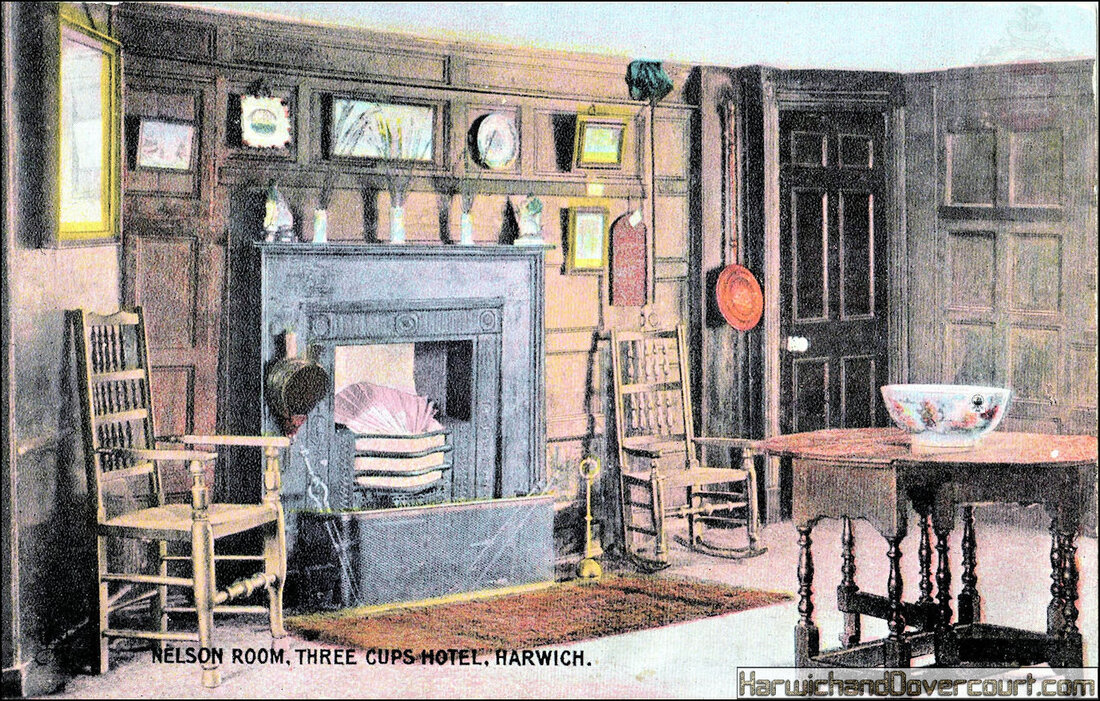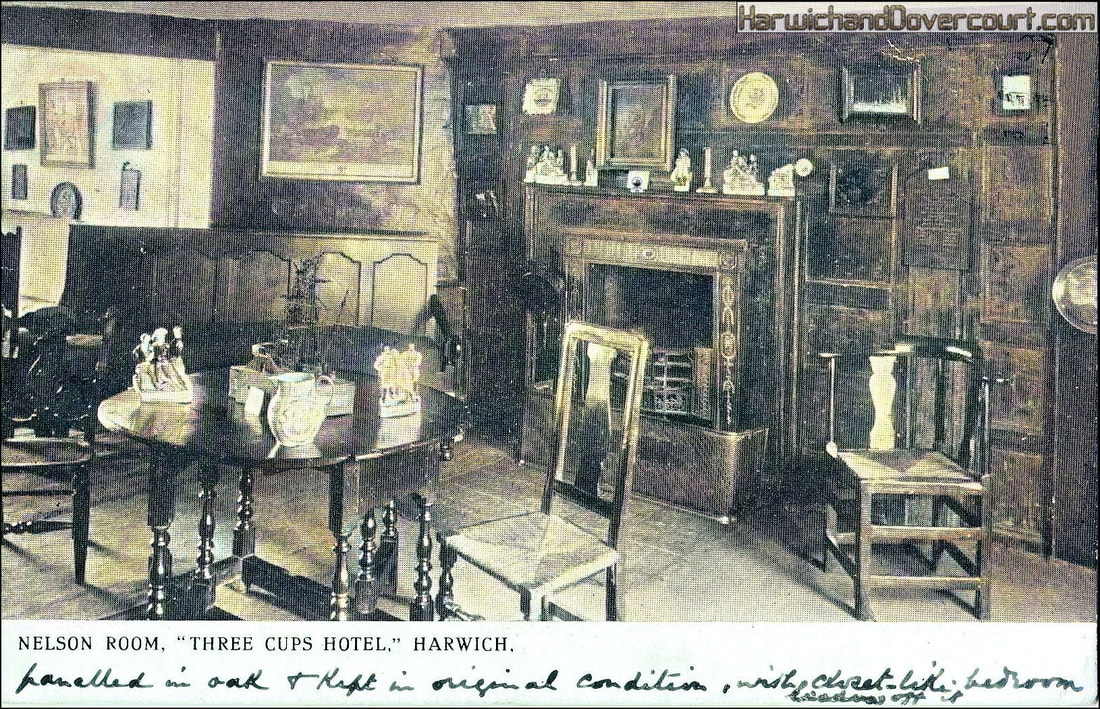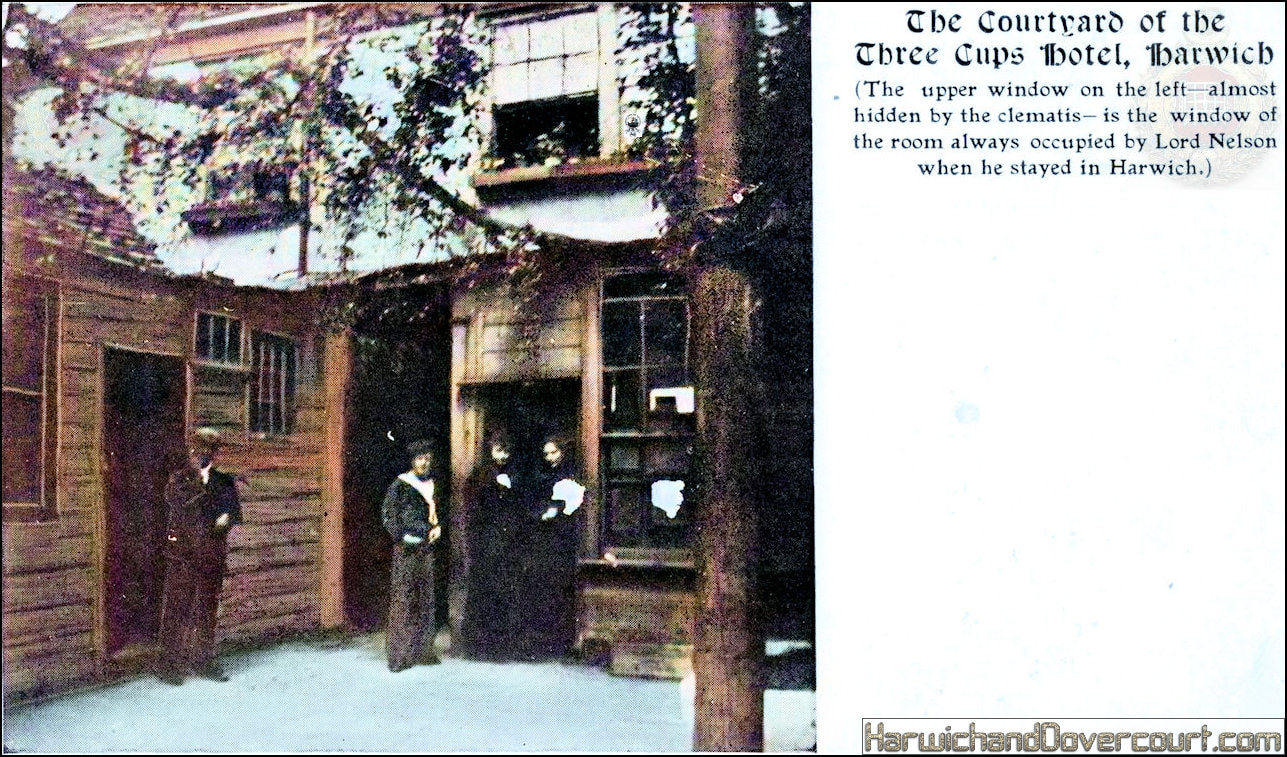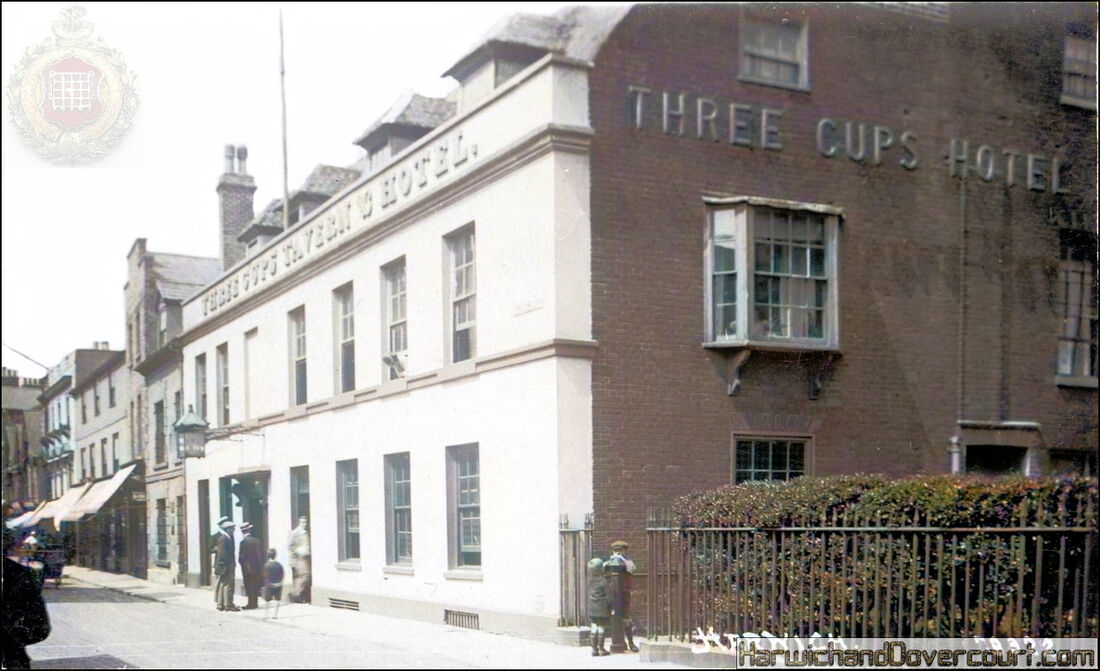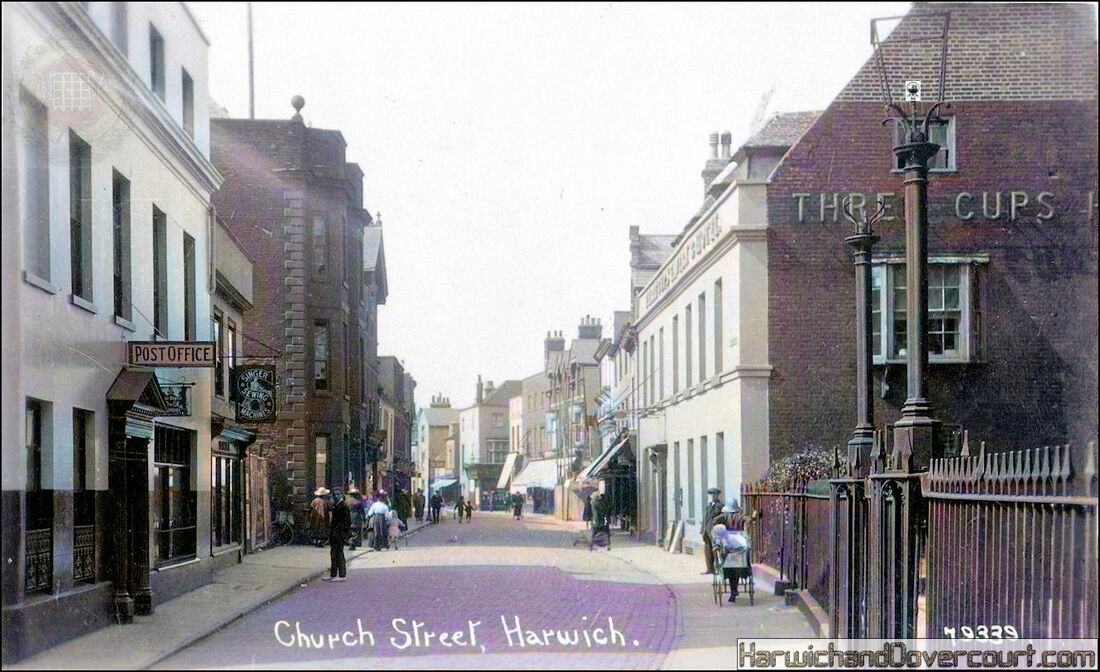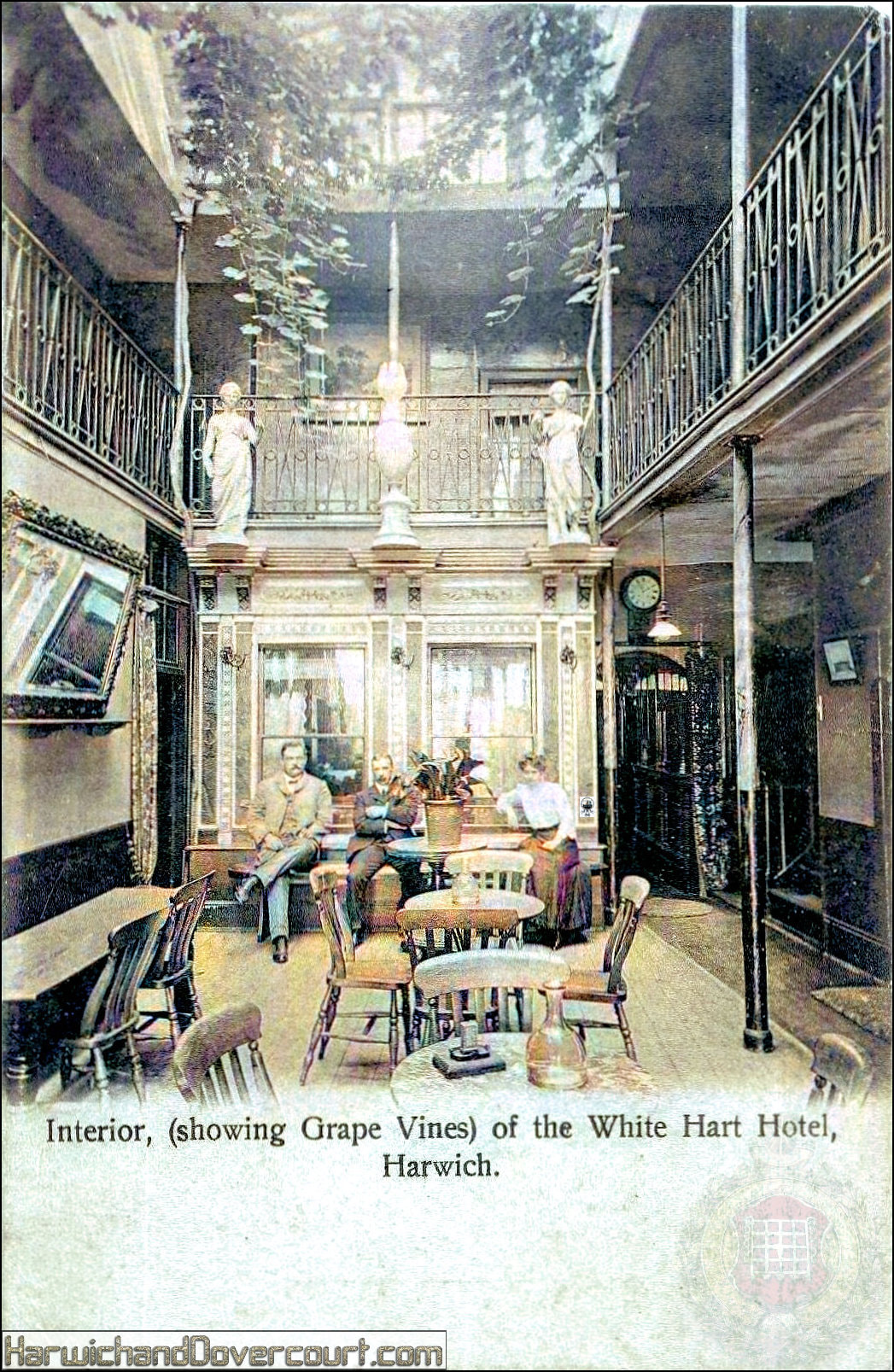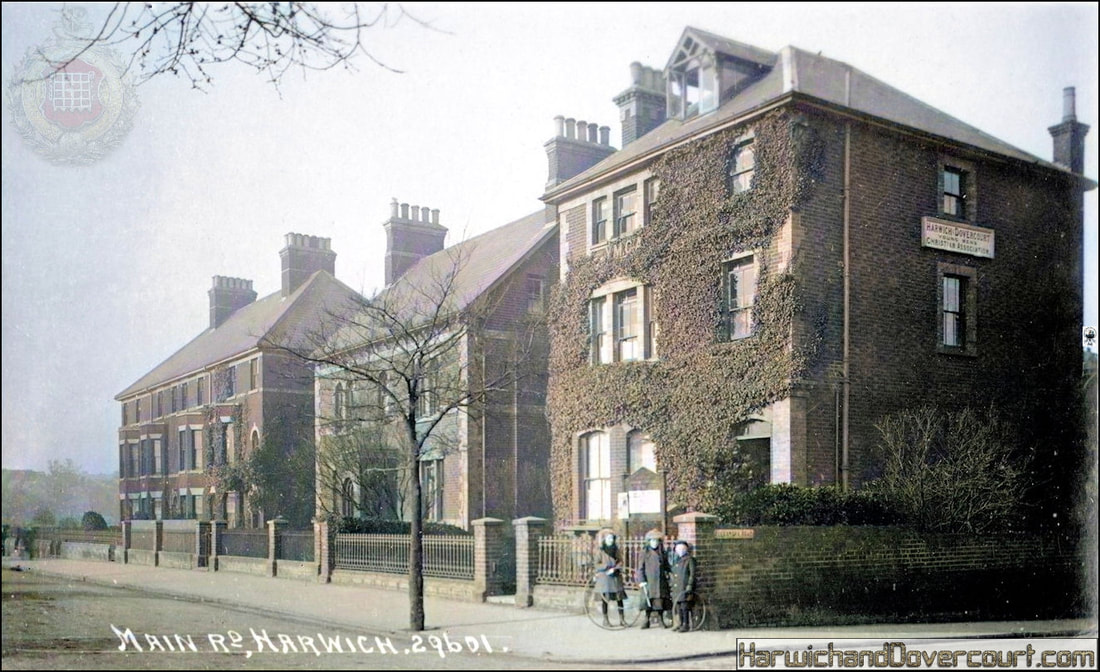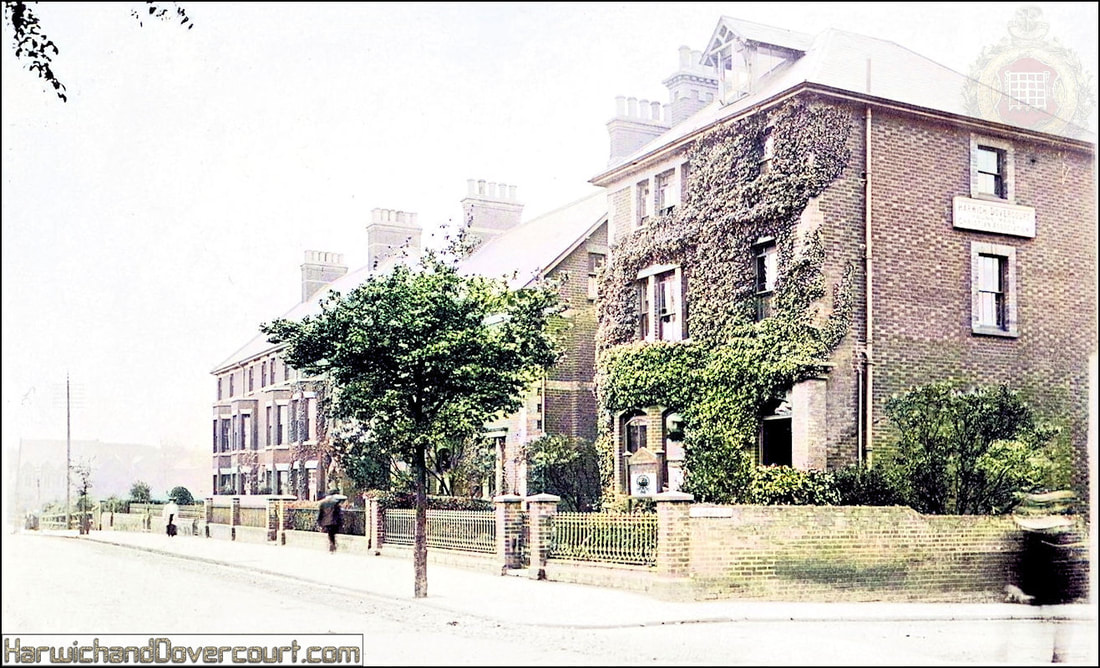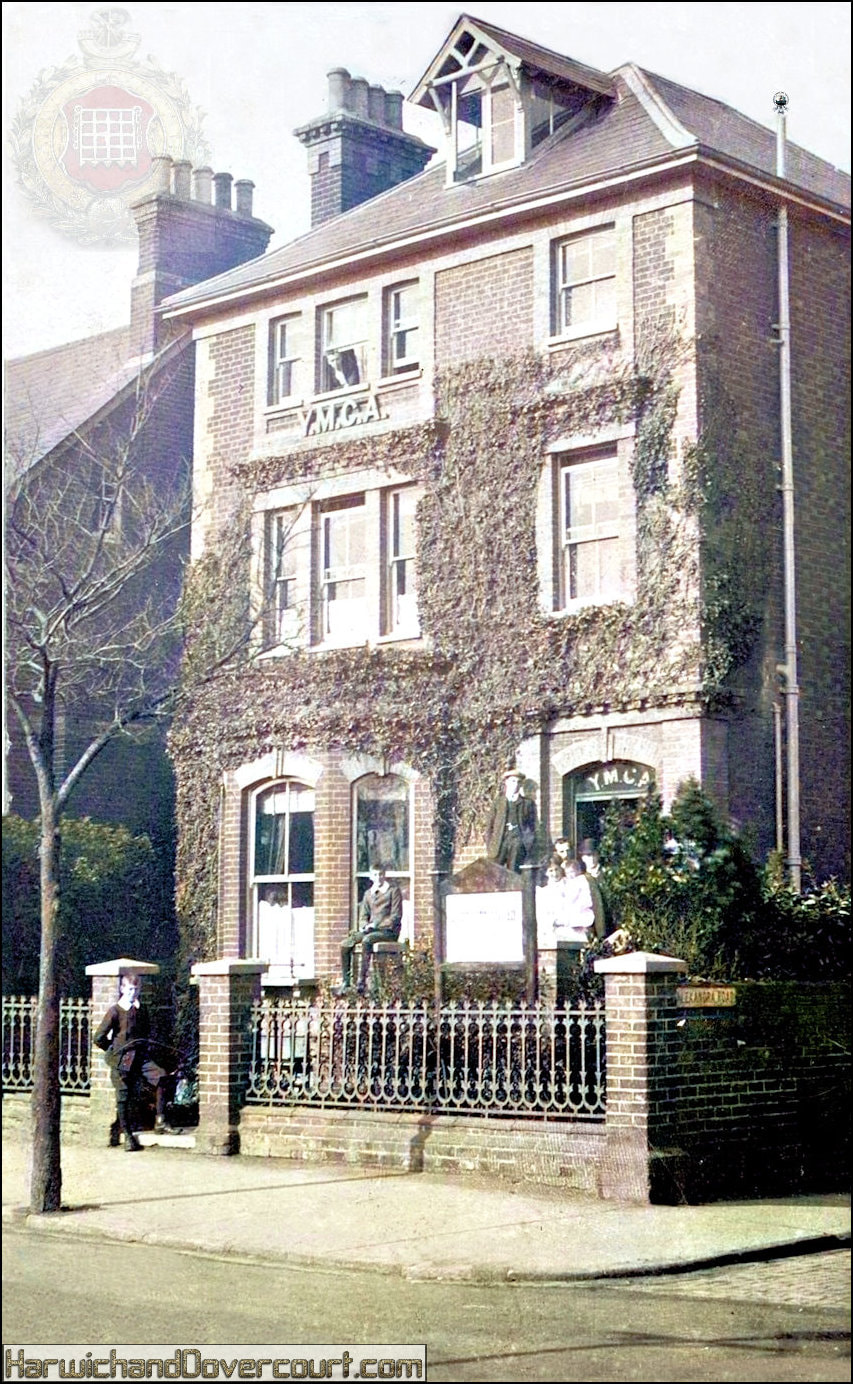Harwich Town establishments (including pubs, clubs, restaurants & accommodation etc.)
~ 01 The Angel Inn, The Quay Harwich (1950) ~
Kings Quay Street
Opened in 1791 and closed in 1999
02 The Dukes Head, Church St, Harwich (1948) H&D FW
03 Interior of the Elephant & Castle public House, Harwich, Essex (1911) H&D F
04 The Elephant & Castle Public House (Rear Exterior), Harwich (1911) H&D FW
05 The Little Eastern, 11 George St, Harwich (1911) H&D FW (Closed in 1952 ~ Demolished in 1980's for Housing).
06 The Market Place, Harwich (1937) H&D FW
07 The Market Place, Harwich, Essex (1937) H&D F W
08 Norfolk Dining Rooms, West St, Harwich (1908) FW
Back of The White Hart Hotel
3 George Street
Opened in 1791 and closed in 1954
Norfolk Dining Rooms, West St, Harwich (1906) H&D
At the rear of the old "Railway Hotel" (later White Hart Hotel) located at 6 George Street, Harwich, were the “Norfolk Dining Rooms” fronting onto West Street, as seen here. The Hotel and Dining Rooms successfully traded from 1791 to 1954, sadly the property was finally demolished in 1976 as part of the rejuvenation in West Street.
The original Hotel, converted its stables at the rear of the building into hospital, during the Napoleonic War and eventually into accommodation and dining rooms. With the arrival of the railways in Harwich, the nearby George Street entrance, switched from being an Inn, to Dining Rooms, then back to an Inn, dependent on the passing trade, from the Station. In 1979 during the rebuilding work, an archaeological dig encountered cellar walls dating back to the 13th Century, more information can be found in “The Excavations at The White Hart Hotel, George Street, Harwich 1979 by B. H. Milton with contributions by M . R. Eddy”.
The present street plan of Harwich dates back to medieval times. In circa 1550 the principal street was then called East Street (now King's Head Street), parallel to which were Middle Street (now Church Street) and West Street. At that time there were few buildings on West Street and the area to the west of West Street was taken up with farm buildings and stock enclosures. A Tudor map of Harwich shows the three main streets, but not George Street. However, a map of 1603 or later does show George Street and a house on the site of the George Hotel.
At the rear of the old "Railway Hotel" (later White Hart Hotel) located at 6 George Street, Harwich, were the “Norfolk Dining Rooms” fronting onto West Street, as seen here. The Hotel and Dining Rooms successfully traded from 1791 to 1954, sadly the property was finally demolished in 1976 as part of the rejuvenation in West Street.
The original Hotel, converted its stables at the rear of the building into hospital, during the Napoleonic War and eventually into accommodation and dining rooms. With the arrival of the railways in Harwich, the nearby George Street entrance, switched from being an Inn, to Dining Rooms, then back to an Inn, dependent on the passing trade, from the Station. In 1979 during the rebuilding work, an archaeological dig encountered cellar walls dating back to the 13th Century, more information can be found in “The Excavations at The White Hart Hotel, George Street, Harwich 1979 by B. H. Milton with contributions by M . R. Eddy”.
The present street plan of Harwich dates back to medieval times. In circa 1550 the principal street was then called East Street (now King's Head Street), parallel to which were Middle Street (now Church Street) and West Street. At that time there were few buildings on West Street and the area to the west of West Street was taken up with farm buildings and stock enclosures. A Tudor map of Harwich shows the three main streets, but not George Street. However, a map of 1603 or later does show George Street and a house on the site of the George Hotel.
09 The Pier Hotel, Harwich, Harbourside (1908) H&D FW
The Pier
The Quay, Harwich
This attractive hotel was built in 1862 in the style of a Venetian palazzo and has remained in continuous service ever since. It sits above the historic Ha'Penny Pier with big skies above and watery views that shoot across the Stour estuary to Felixstowe. Inside you find a contemporary feel: boarded floors, a granite bar, deco travel posters framed on the wall, big arched windows to bring in the view.
The Quay, Harwich
This attractive hotel was built in 1862 in the style of a Venetian palazzo and has remained in continuous service ever since. It sits above the historic Ha'Penny Pier with big skies above and watery views that shoot across the Stour estuary to Felixstowe. Inside you find a contemporary feel: boarded floors, a granite bar, deco travel posters framed on the wall, big arched windows to bring in the view.
10 The Pier, Harwich Harbour (1958) H&D FW
11 Pier Hotel, Harwich Harbour (1999) H&D FW
Click here for a link to the web site
12 Harwich Quay Pavilion (1948) H&D FW
13 Three Cups Inn, Harwich, Essex (1880) H&D FC
64 Church Street, Harwich.
Opened in 1791 and closed in 1995
14 The Three Cups Hotel, Harwich, Essex.
note on card states "Lord Nelson's Rooms may still be seen here" (1905) Bell's FW
15 29580 The Three Cups Tavern Hotel & St Nicholas Church, Harwich (1906) Bells H&D FW
16 29581 Nelson's Room at the Three Cups, Harwich (1906) Bell's FW
17 Three Cups Hotel Harwich, Nelson Room & Courtyard (1908) H&D FW
18 Clematis Court Yard, The Three Cups Hotel. Harwich M FW
19 Nelson Room, Three Cups Hotel, Harwich (1907) H&D FW
20 Nelson Room, at the Three Cups Hotel, Harwich (1902) H&D FW
21 The Courtyard of Three Cups Hotel Harwich (1912) H&D FW
~ #79322 The Three Cups Tavern & Hotel, Harwich (1920) Bell's H&D ~
#79322 - The Three Cups, Public House, Church Street, Harwich (1921) by Bell's Publishing
The timber framed “Three Cups” former pub in Church Street, was built circa 1500 and has traded as a public house, hotel, livery stables and Inn, seeing many famous people come and go. Today it is a private residence, but still displays a plaque to remind residents and visitors of its place in history.
The end of the property on the church side shows off the red Flemish-bond brickwork of the period but the whole building is missing its former upper story which was removed in 1949 following a fire. In 1972 it was listed a Grade II by English Heritage.
Notable visitors included Sir James Thornhill, in 1711, the eminent baroque artist responsible for the paintings on the inside of the dome of St Paul's Cathedral, Frederick Prince of Wales in 1728 (the eldest son of King George II) and in 1734, the Princess of Orange (Anne, Princess Royal of England, the eldest daughter of King George II of England and married to William VI, Prince of Orange).
There has long been a claim that Lord Nelson came to the pub to meet his lover Lady Hamilton but there is no documentary evidence. Some insist that Nelson would have stayed aboard his boat the Medusa which was moored in the harbour during his time in Harwich but others have pointed out that if he was to come ashore for a tryst it probably wouldn't be recorded.
The timber framed “Three Cups” former pub in Church Street, was built circa 1500 and has traded as a public house, hotel, livery stables and Inn, seeing many famous people come and go. Today it is a private residence, but still displays a plaque to remind residents and visitors of its place in history.
The end of the property on the church side shows off the red Flemish-bond brickwork of the period but the whole building is missing its former upper story which was removed in 1949 following a fire. In 1972 it was listed a Grade II by English Heritage.
Notable visitors included Sir James Thornhill, in 1711, the eminent baroque artist responsible for the paintings on the inside of the dome of St Paul's Cathedral, Frederick Prince of Wales in 1728 (the eldest son of King George II) and in 1734, the Princess of Orange (Anne, Princess Royal of England, the eldest daughter of King George II of England and married to William VI, Prince of Orange).
There has long been a claim that Lord Nelson came to the pub to meet his lover Lady Hamilton but there is no documentary evidence. Some insist that Nelson would have stayed aboard his boat the Medusa which was moored in the harbour during his time in Harwich but others have pointed out that if he was to come ashore for a tryst it probably wouldn't be recorded.
